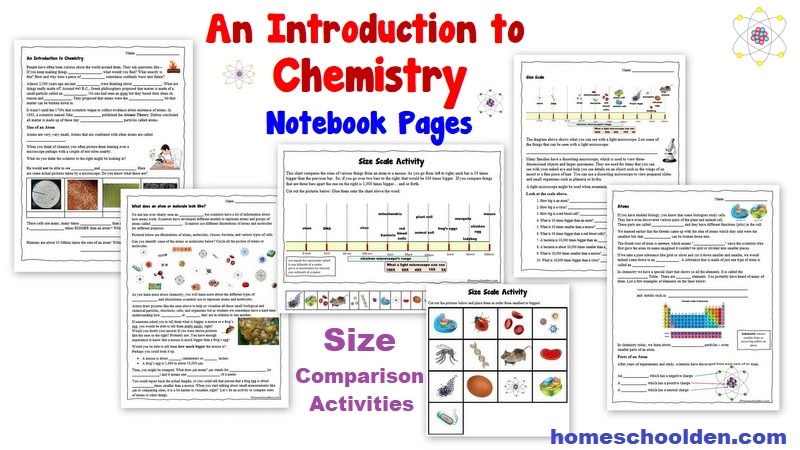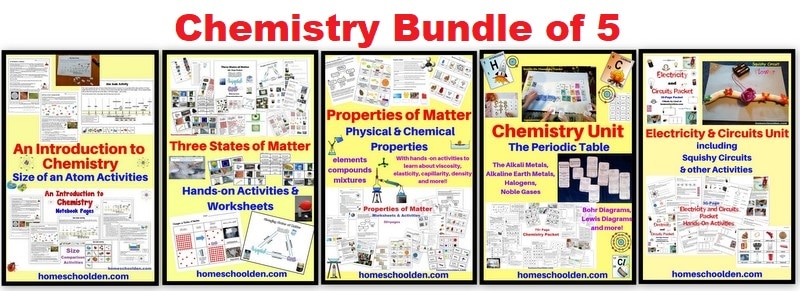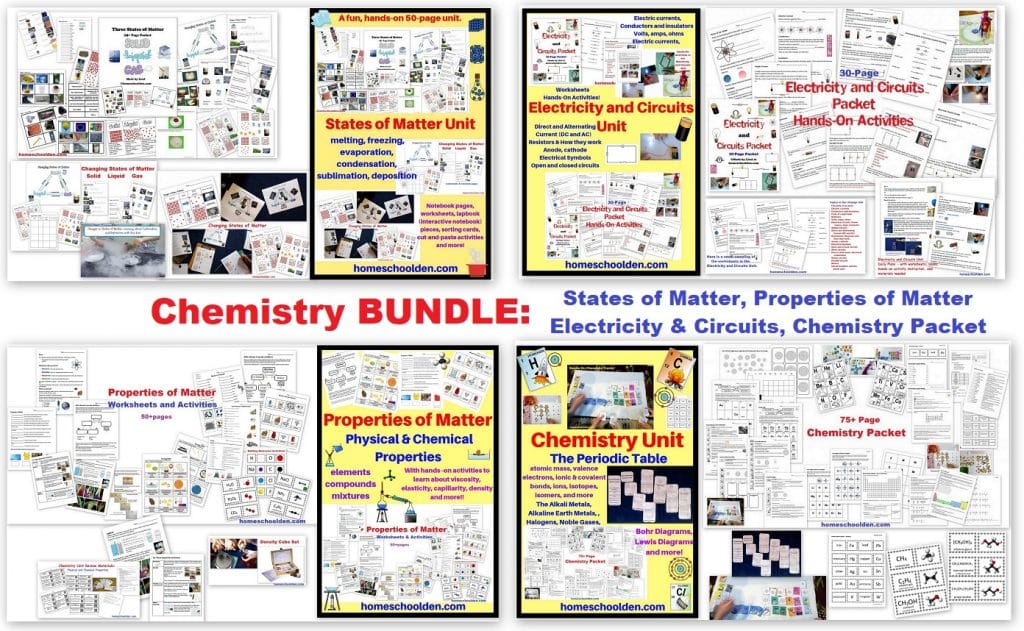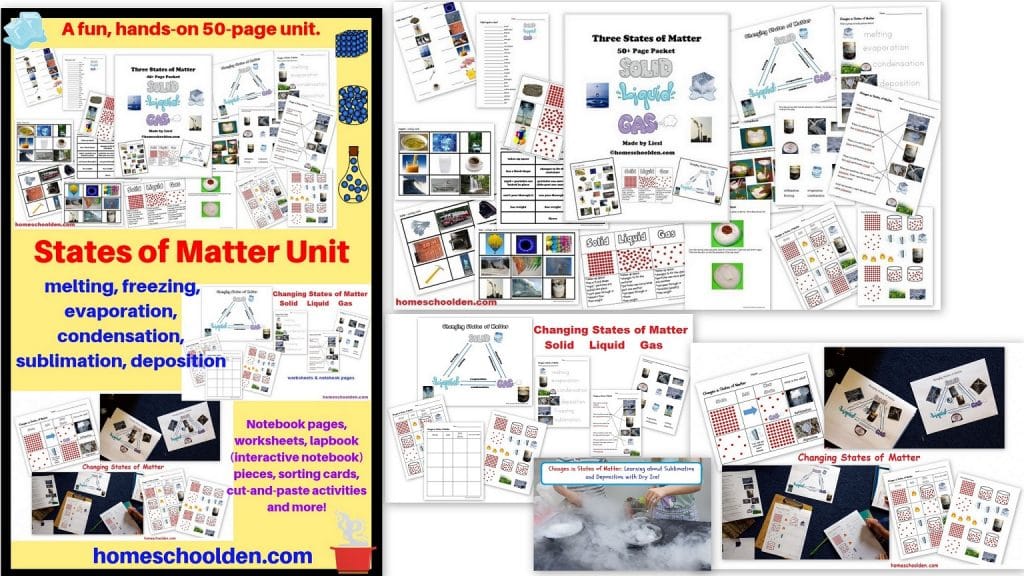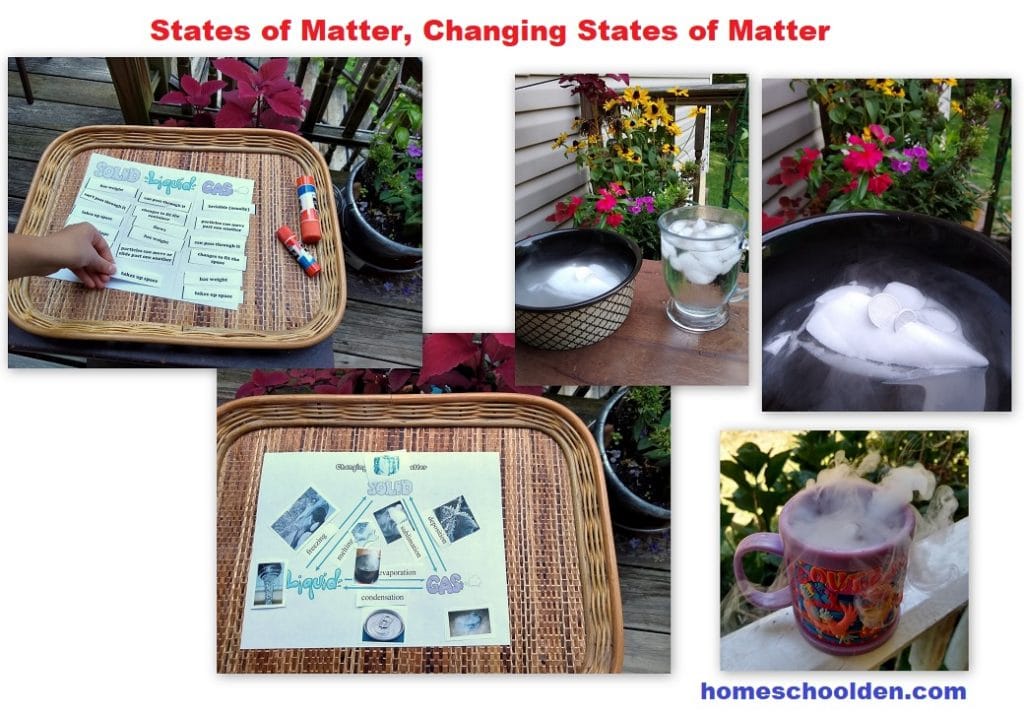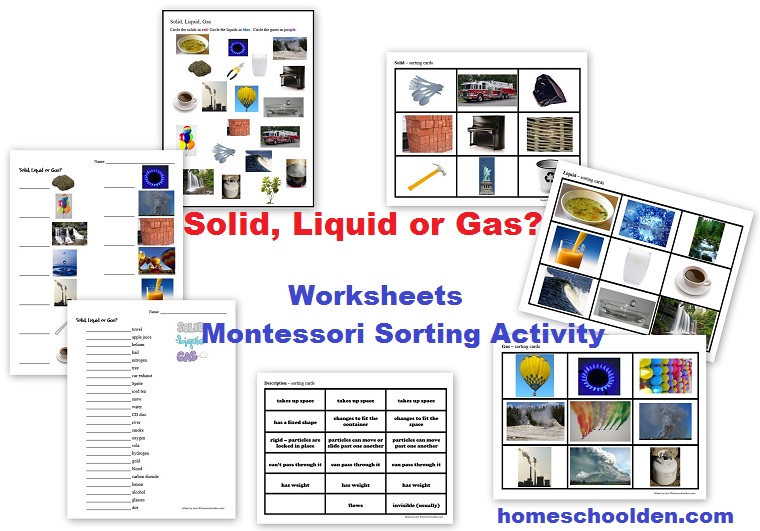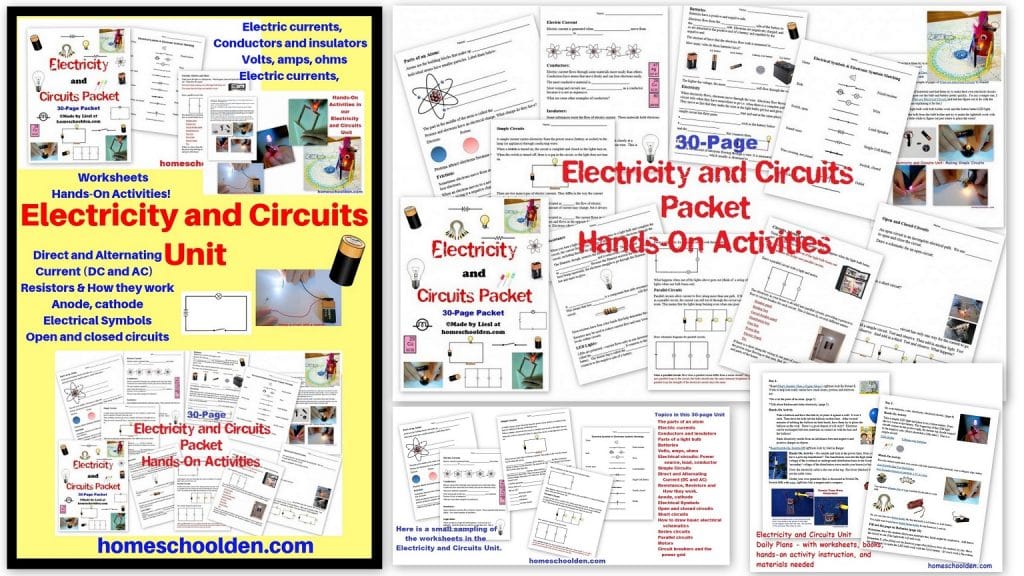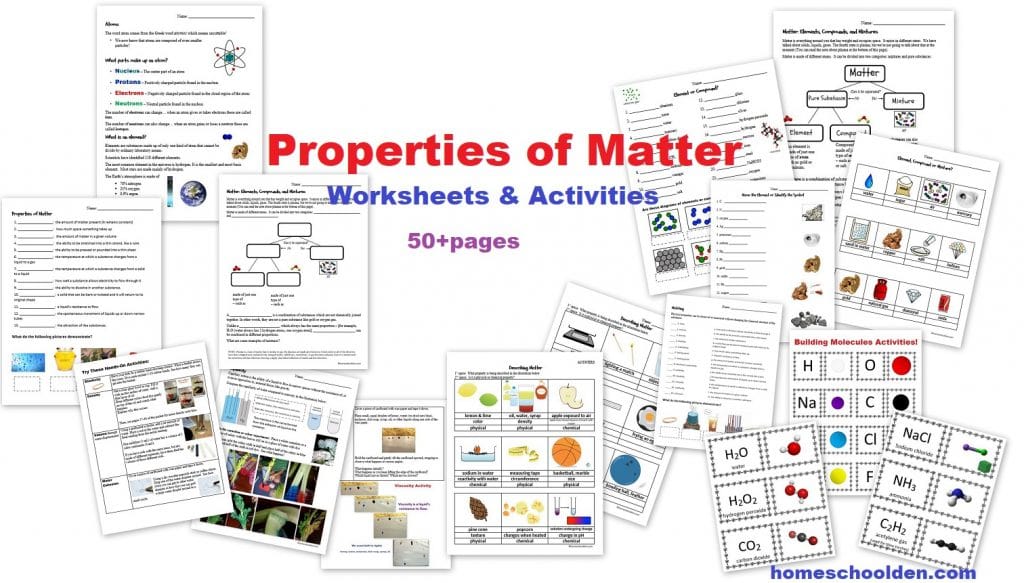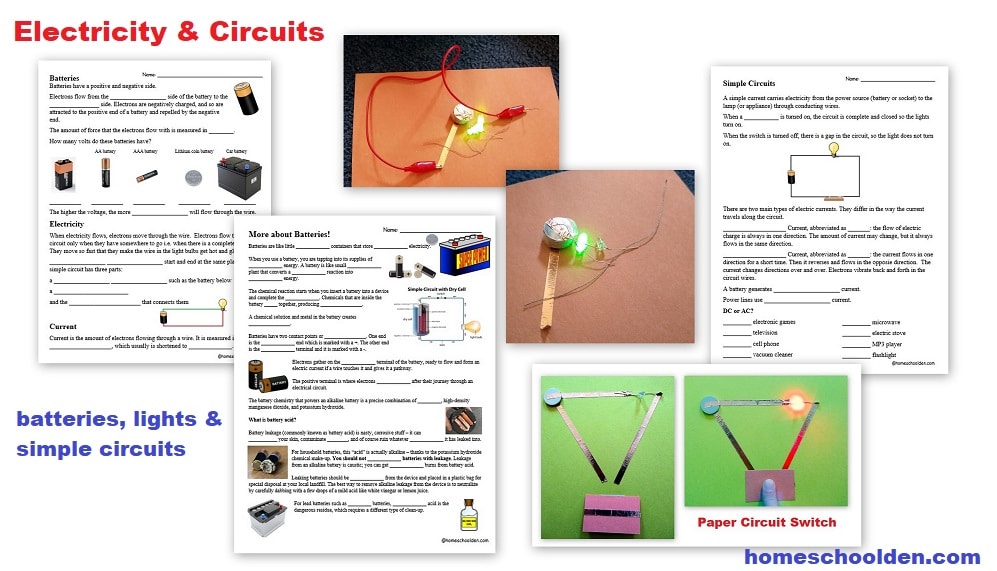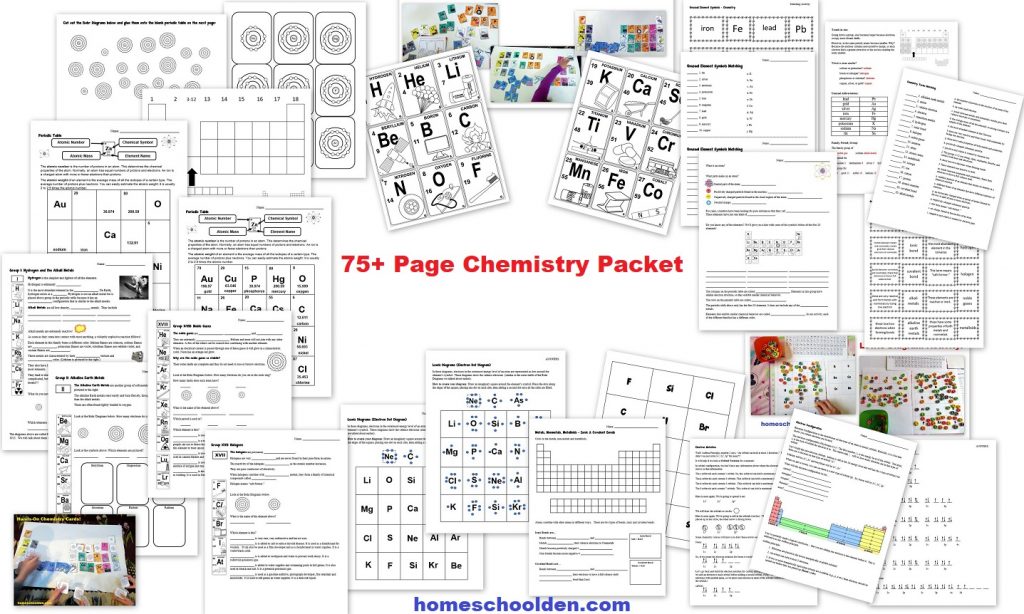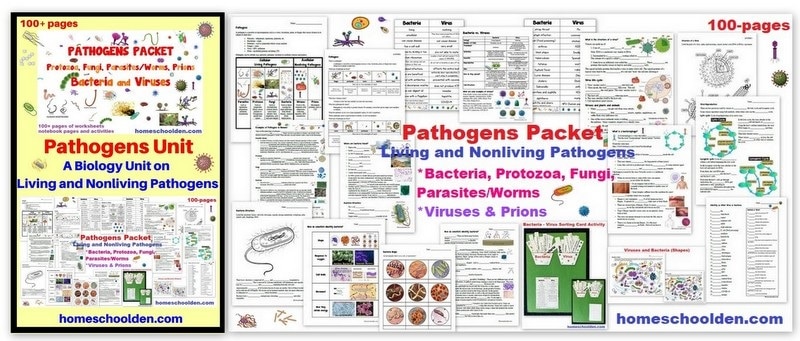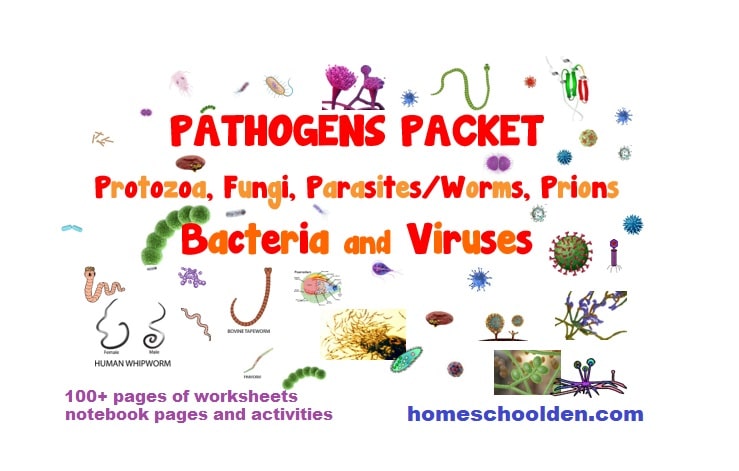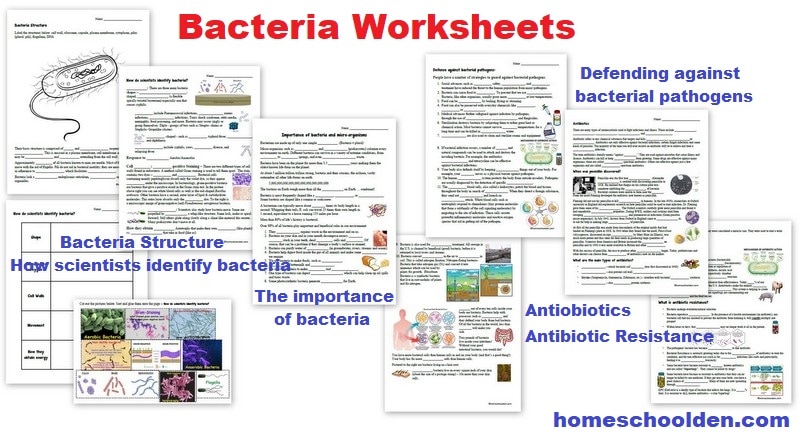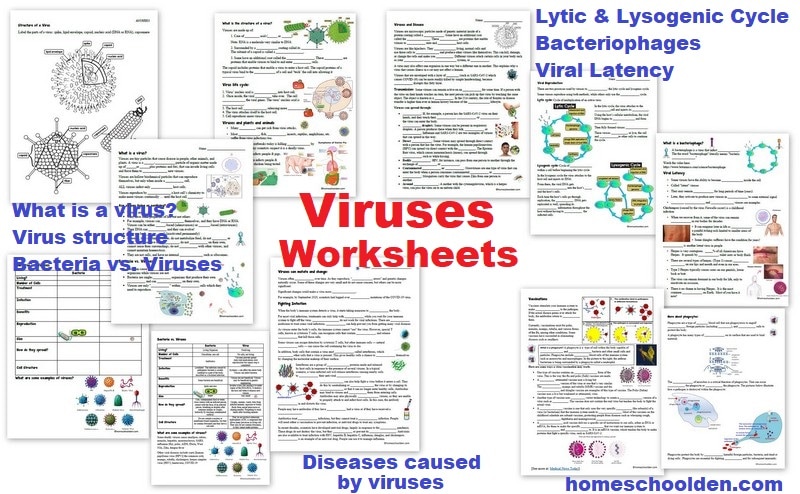How small is an atom? How does an atom compare in size to virus or to a plant cell? This introductory chemistry packet has a number of activities to help kids conceptualize just how small an atom is.
The Intro to Chemistry – Size of Atoms Mini-Unit is just $0.99 through May 6th!
This Introduction to Chemistry mini-unit includes several notebook pages and activities about atoms, the size of atoms, what atoms look like compared to bacteria and viruses.
There are a number of activities that will help students to understand size and scale while comparing atoms, DNA, viruses, cells, frog’s eggs and other things up to the size of mice.
It can be challenging for kids to understand and conceptualize difference in size between atoms, cells and other objects. An atom is the smallest unit of a chemical element and a cell is the smallest unit with the basic properties of life. This packet helps kids explore the relative size of atoms compared to other larger cells and organisms.
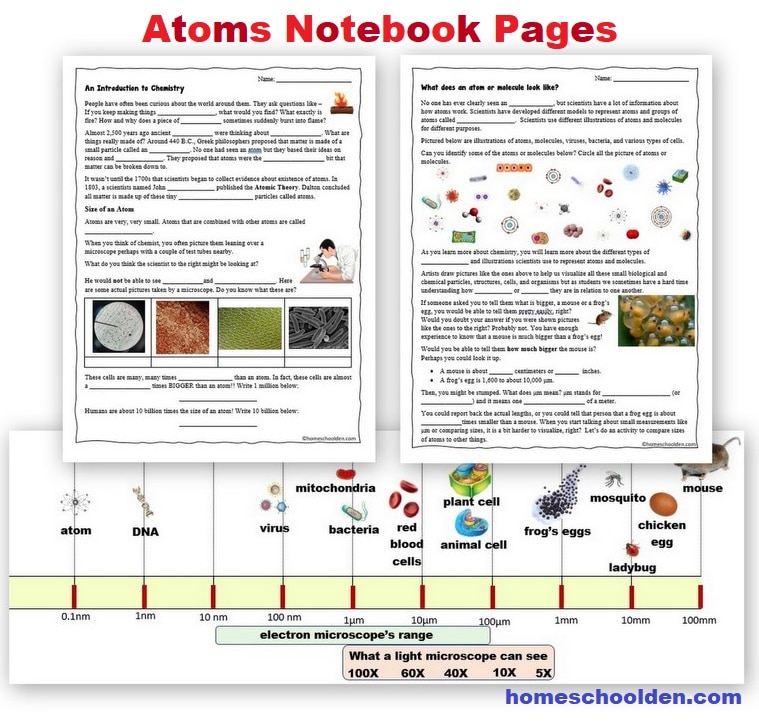 This packet begins with a basic introduction to chemistry. We talked about how Greek philosophers thought about matter and proposed the idea of an indivisible particle called an atom. In the 1700s scientists learned more about atoms and in 1803, John Dalton proposed the Atomic Theory, the idea that all matter is made of atoms.
This packet begins with a basic introduction to chemistry. We talked about how Greek philosophers thought about matter and proposed the idea of an indivisible particle called an atom. In the 1700s scientists learned more about atoms and in 1803, John Dalton proposed the Atomic Theory, the idea that all matter is made of atoms.
From there, we talked about the size of an atom. One quick activity includes illustrations of atoms and molecules, viruses, bacteria and other cells. Students have to pick out the pictures of atoms and molecules. Illustrations don’t tell us much about the relative size of these particles. The next Size Comparison Activity is designed to help understand just how small an atom is.
I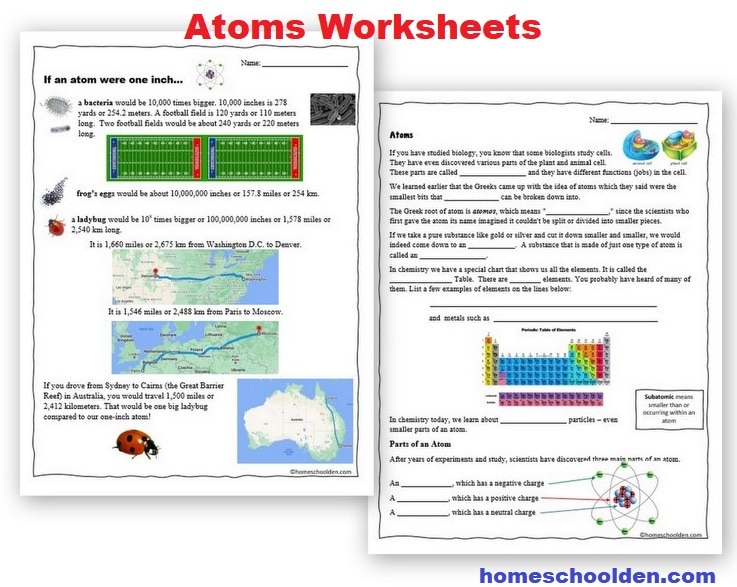 t also introduces students to some really small measurements – the nanometer and micrometer.
t also introduces students to some really small measurements – the nanometer and micrometer.
The final page introduces students to elements and the periodic table.
There are several notebook pages. The student pages are fill-in-the-blanks. There are full-text pages which the instructor can use (or if your family prefers, your students can read through the full-text pages instead). You do not need any outside sources or books with this packet. This Introduction to Chemistry Packet will take just a few days to complete.
What age is this material for? This is probably most suitable for upper elementary and middle school students, though younger students could certainly arrange the objects in order and participate with siblings.
I added this material to the Chemistry Bundle. If you ordered the Chemistry Bundle previously, be sure to check your PayPal email address for the update email with your download link. Please feel free to email me if you need any help!
Our packets are PDF digital downloads.
I hope your kids enjoy this mini-unit! 
This new Introduction to Chemistry – Size of Atoms Packet is currently $0.99!! It is discounted through May 6th, 2022! Enjoy! ~Liesl
Introduction to Chemistry – Size of Atoms Mini-Unit
$2.99 $0.99
This mini-unit would also work well as an introduction to our unit on Pathogens Bacteria, Viruses, etc. See more information about the Pathogens Unit here. This was one of ED’s favorite units!
 Our units are PDF digital downloads. Be sure to check your PayPal email address for the download link. If you have any questions or problems feel free to email me! You should get your automatic download link from SendOwl within a few minutes. If you don’t, be sure to email me if you need me to send the link to you again! Here are some answers to some Frequently Asked Questions. ~Liesl
Our units are PDF digital downloads. Be sure to check your PayPal email address for the download link. If you have any questions or problems feel free to email me! You should get your automatic download link from SendOwl within a few minutes. If you don’t, be sure to email me if you need me to send the link to you again! Here are some answers to some Frequently Asked Questions. ~Liesl
You might also be interested in our other Chemistry Units!
Find out more about the Chemistry BUNDLE options here or scroll down below.
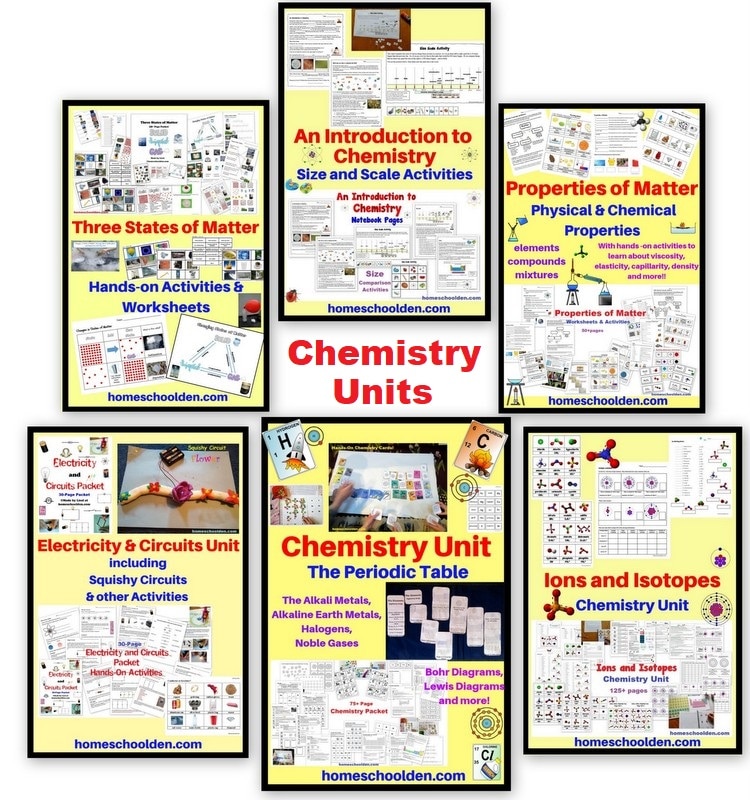 Be sure to check your PayPal email address for the download link. Click here to read some FAQ. Feel free to email me with any questions! ~Liesl
Be sure to check your PayPal email address for the download link. Click here to read some FAQ. Feel free to email me with any questions! ~Liesl
![]() $28.99 This option is COMING SOON! Chemistry BUNDLE of 6 (Introduction to Chemistry Mini-Packet: Size and Scale Activities, States of Matter Packet, Properties of Matter Packet, Electricity & Circuits Packet, Chemistry Packet, Ions & Isotopes Chemistry Unit)
$28.99 This option is COMING SOON! Chemistry BUNDLE of 6 (Introduction to Chemistry Mini-Packet: Size and Scale Activities, States of Matter Packet, Properties of Matter Packet, Electricity & Circuits Packet, Chemistry Packet, Ions & Isotopes Chemistry Unit)
![]() $23.99 Chemistry BUNDLE of 5 – 1) Introduction to Chemistry Mini-Packet: Size and Scale Activities, 2) States of Matter Packet, 3) Properties of Matter Packet, 4) Electricity & Circuits Packet, 5) Chemistry Packet
$23.99 Chemistry BUNDLE of 5 – 1) Introduction to Chemistry Mini-Packet: Size and Scale Activities, 2) States of Matter Packet, 3) Properties of Matter Packet, 4) Electricity & Circuits Packet, 5) Chemistry Packet
You can also purchase these chemistry packets separately
![]()
$2.99 $0.99 (until May 6th) Introduction to Chemistry – Size of Atoms Mini-Unit
![]() $6.99 Properties of Matter Packet
$6.99 Properties of Matter Packet
![]() $5.99 Electricity & Circuits Packet
$5.99 Electricity & Circuits Packet
![]() $7.99 Chemistry Packet – An introduction to the Periodic Table (150 pages) – Learn how the periodic table is organized and find out more about the different groups of the periodic table (Alkali metals, alkaline earth metals, halogens). Learn what valence electrons are and do some fun activities to create Lewis structures. Learn about the first twenty elements as well as elements with unusual names. Plus, learn about electron configuration and more!
$7.99 Chemistry Packet – An introduction to the Periodic Table (150 pages) – Learn how the periodic table is organized and find out more about the different groups of the periodic table (Alkali metals, alkaline earth metals, halogens). Learn what valence electrons are and do some fun activities to create Lewis structures. Learn about the first twenty elements as well as elements with unusual names. Plus, learn about electron configuration and more!
![]()
$7.99 $4.99 (until May 6th) Ions and Isotopes Chemistry Unit
You can find out more about each of these packets at the Chemistry BUNDLE page (or keep scrolling below)
Click on the link to see more details about each of these units:
Properties of Matter Unit — click here or scroll down to see more pictures
Chemistry Packet: The Periodic Table
![]() $6.99 Physical and Chemical Properties of Matter Unit (see bundle option) Matter: Elements, Compounds, Mixtures; Organization of the Periodic Table; Molecular vs. Structural Formulas; Describing Matter: Physical and Chemical Properties; Density Activities – Mass÷Volume; Mixtures: Solutions, Colloids and Suspensions (suggested for grades 5-8)
$6.99 Physical and Chemical Properties of Matter Unit (see bundle option) Matter: Elements, Compounds, Mixtures; Organization of the Periodic Table; Molecular vs. Structural Formulas; Describing Matter: Physical and Chemical Properties; Density Activities – Mass÷Volume; Mixtures: Solutions, Colloids and Suspensions (suggested for grades 5-8)
This 50+ page Properties of Matter packet covers:
- Atoms
- Elements & Compounds
- Organization of the Periodic Table (on a very basic level, our Chemistry Unit goes into *much* more detail on that!). In this unit there is just one page on that.
- Molecular vs. structural formulas
- Physical and Chemical Properties
- Basic definitions (of terms such as viscosity, elasticity, capillarity, ductility, malleability, etc.)
- Hands-On Activities of some of these properties (viscosity, cohesion, capillary action, etc.)
- Density Activities
- Mixtures: Solutions, Colloids and Suspensions
- Separating Mixtures
- Review Materials
- Building Molecules
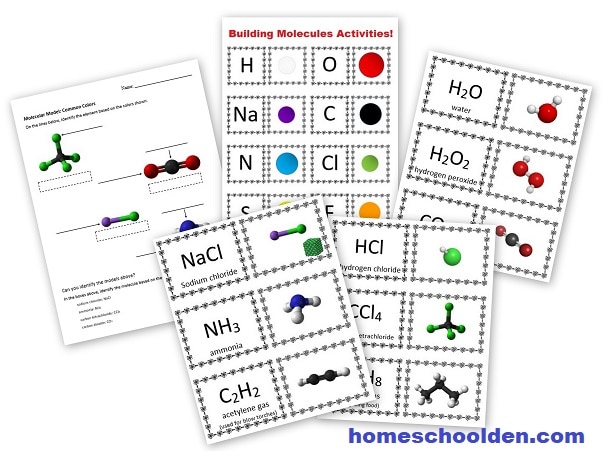
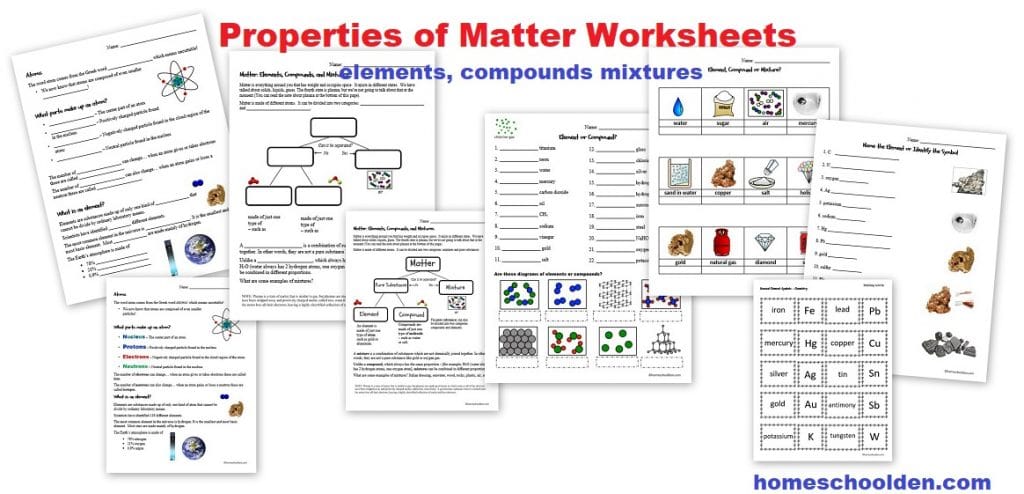
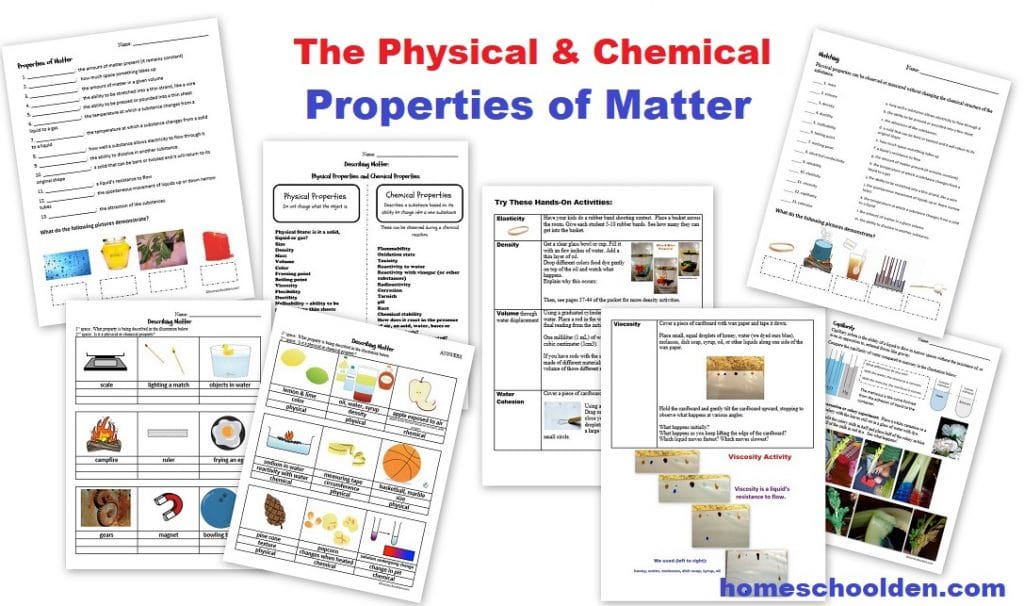

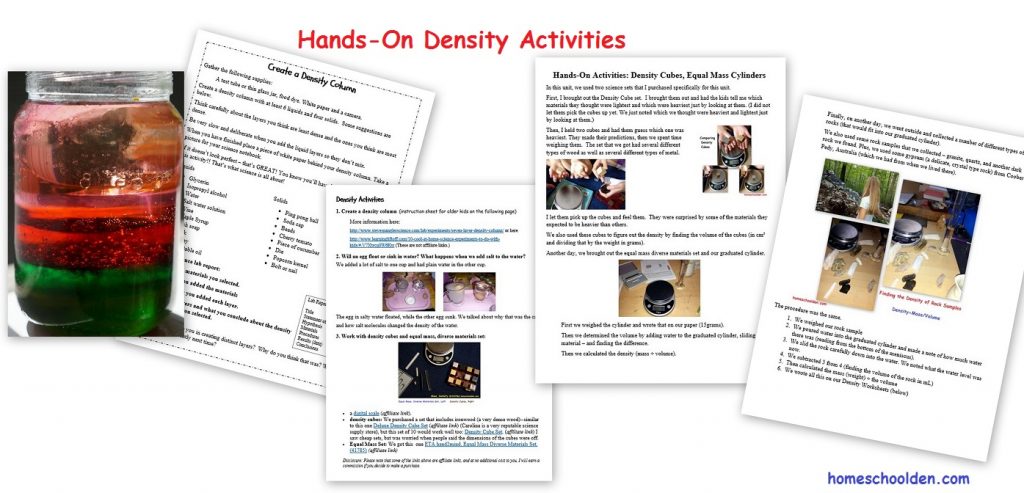
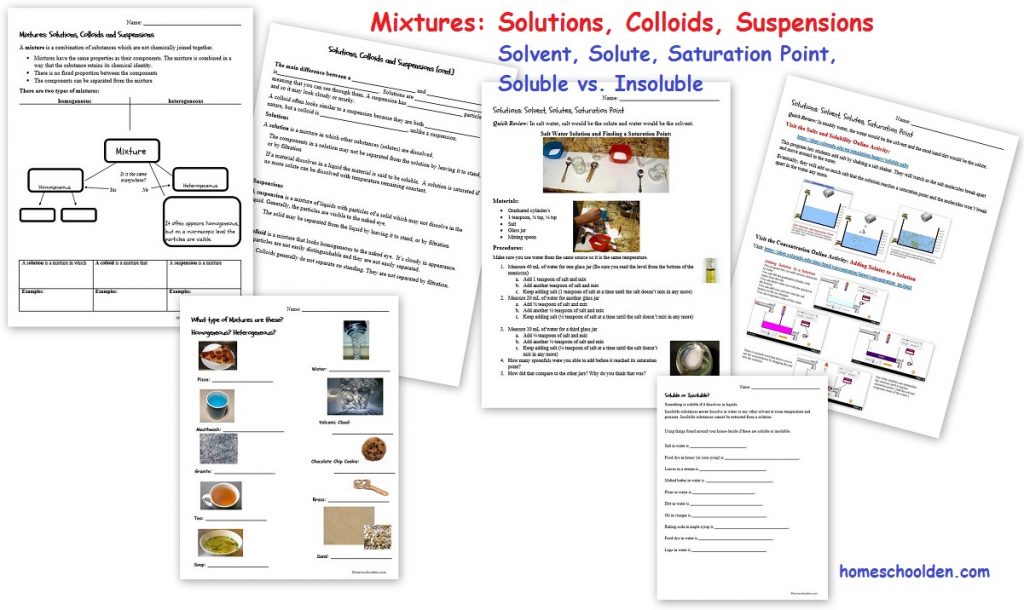
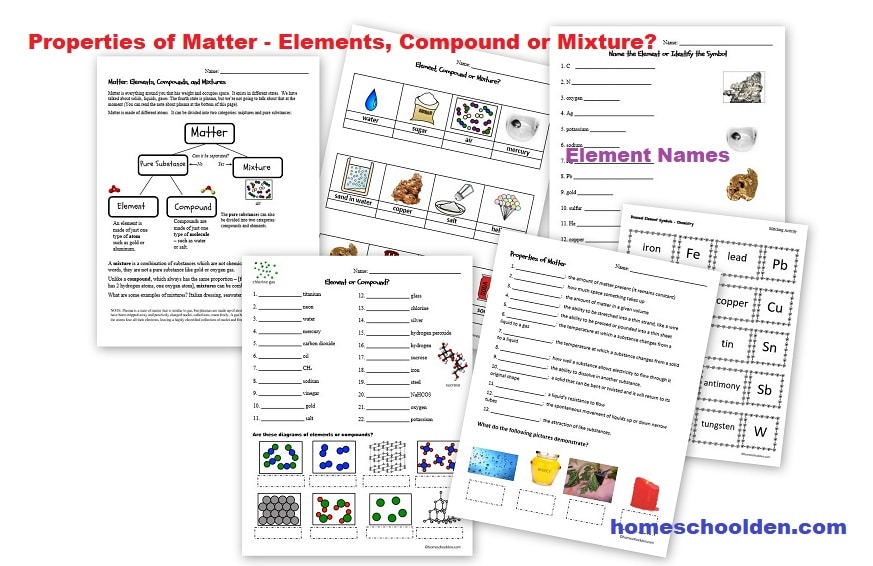

![]() $5.99 Electricity and Circuits STEM Unit (suggested for grades 5-8) This is a fun, hands-on unit! My daughter did this in 6th grade and really loved it!
$5.99 Electricity and Circuits STEM Unit (suggested for grades 5-8) This is a fun, hands-on unit! My daughter did this in 6th grade and really loved it!
Recommended for chemistry:
 Molecular Model Kit: We have had our Molecular Model Kit on hand from the time the kids were pretty young. We used it multiple times a year… building everything from water and carbon dioxide molecules to glucose or methane, ethane, propane, etc. (depending on what we were talking about!) I recommend you get one that has at least 12 (white) hydrogens, 6 (red) oxygens, and 6 or more (black) carbons — I highly recommend this kit (for any time) but especially if you do the Physical & Chemical Properties of Matter Unit and/or the Chemistry Unit.
Molecular Model Kit: We have had our Molecular Model Kit on hand from the time the kids were pretty young. We used it multiple times a year… building everything from water and carbon dioxide molecules to glucose or methane, ethane, propane, etc. (depending on what we were talking about!) I recommend you get one that has at least 12 (white) hydrogens, 6 (red) oxygens, and 6 or more (black) carbons — I highly recommend this kit (for any time) but especially if you do the Physical & Chemical Properties of Matter Unit and/or the Chemistry Unit.
150+ Page Chemistry Packet!
The Chemistry Unit is more than 150 pages and goes into detail about the periodic table, valence electrons, periods, groups, Lewis Diagrams, and basic vocabulary such as ions and isotopes.
Students are introduced to the structure of the periodic table, Bohr Diagrams, Lewis Diagrams and electron configuration in a fun, hands-on way! There are also booklets for students to become familiar with the first 20 elements and elements with unusual names.
I would do the Chemistry Unit after the Properties of Matter Unit.

This booklet had my daughter find out: the atomic number, atomic weight, period and group numbers. Plus, there was some space for her to write some basic facts about each element. 
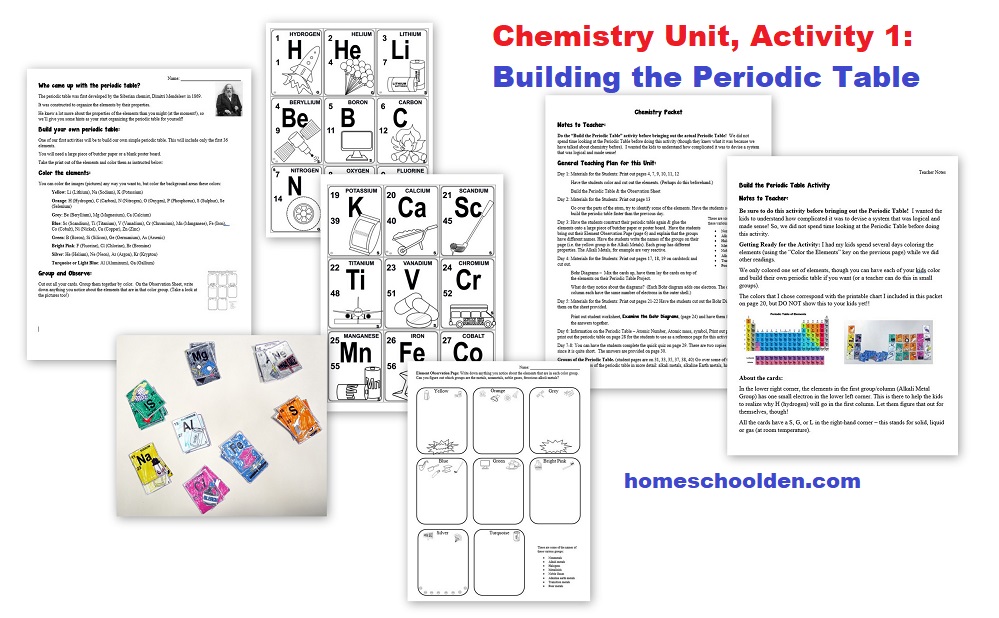

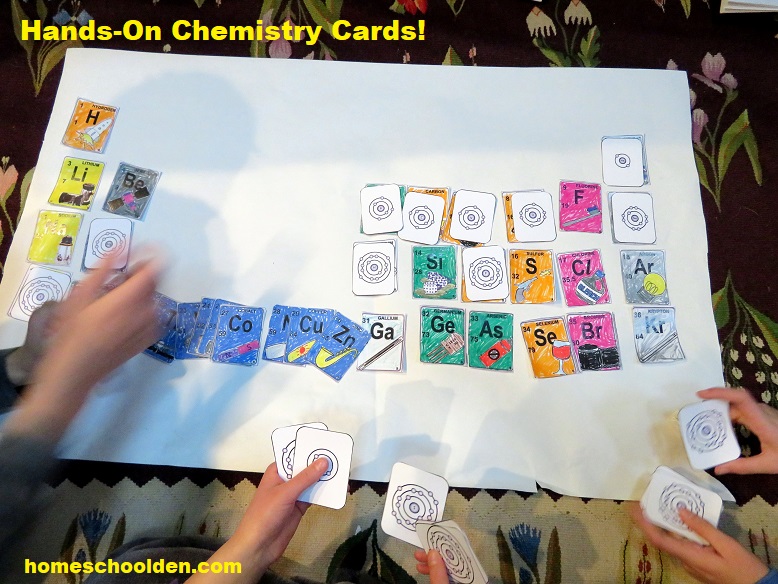



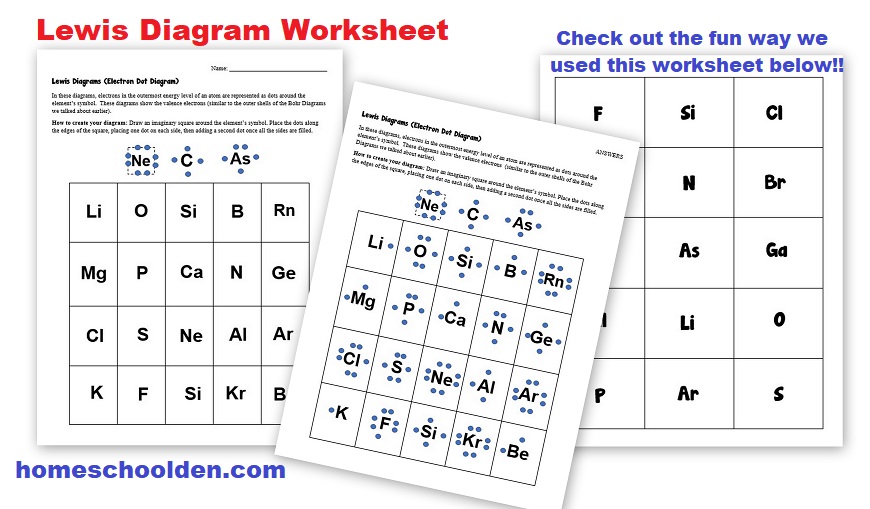
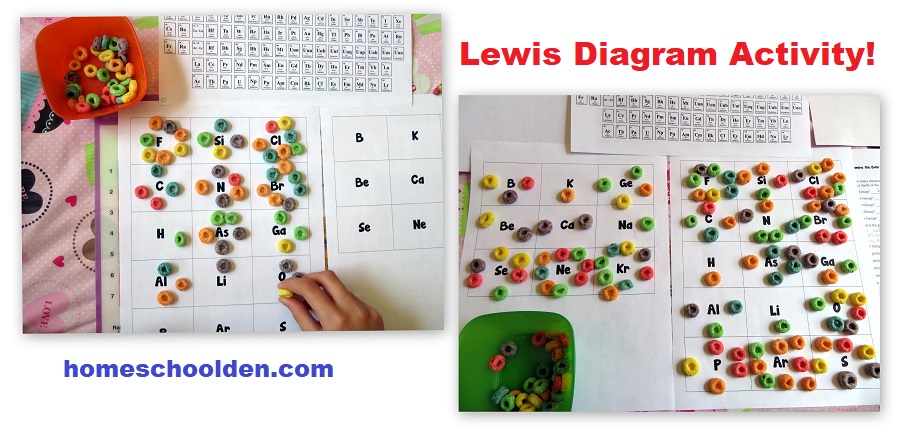

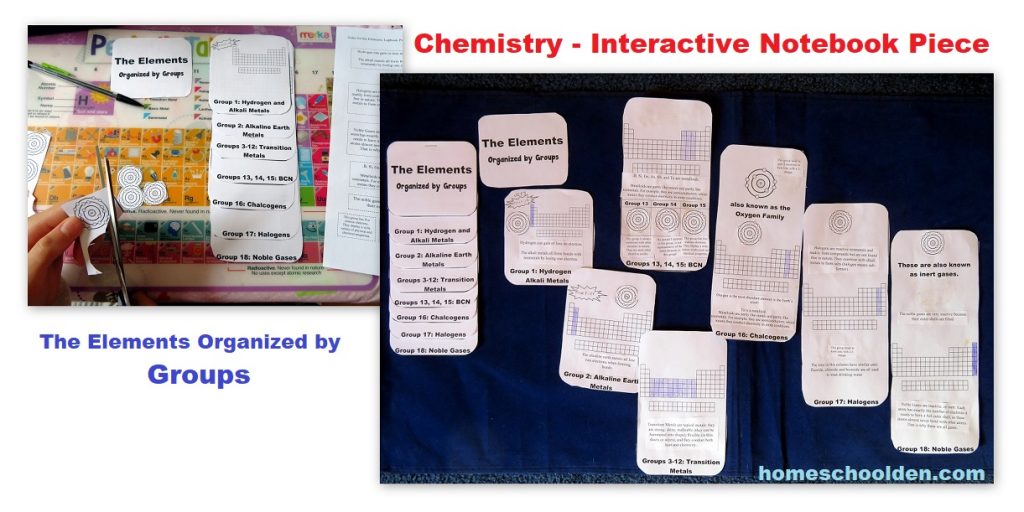
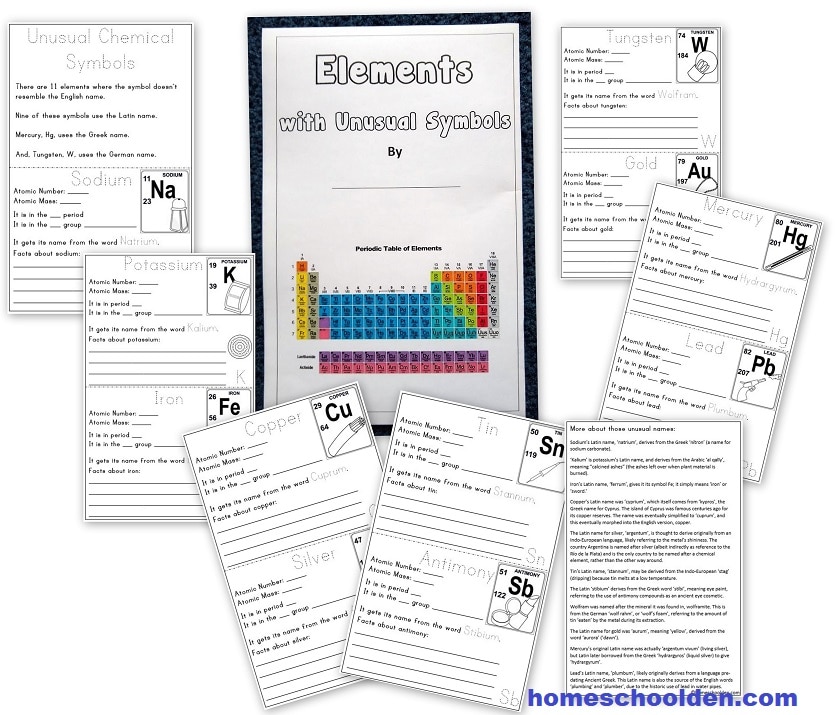
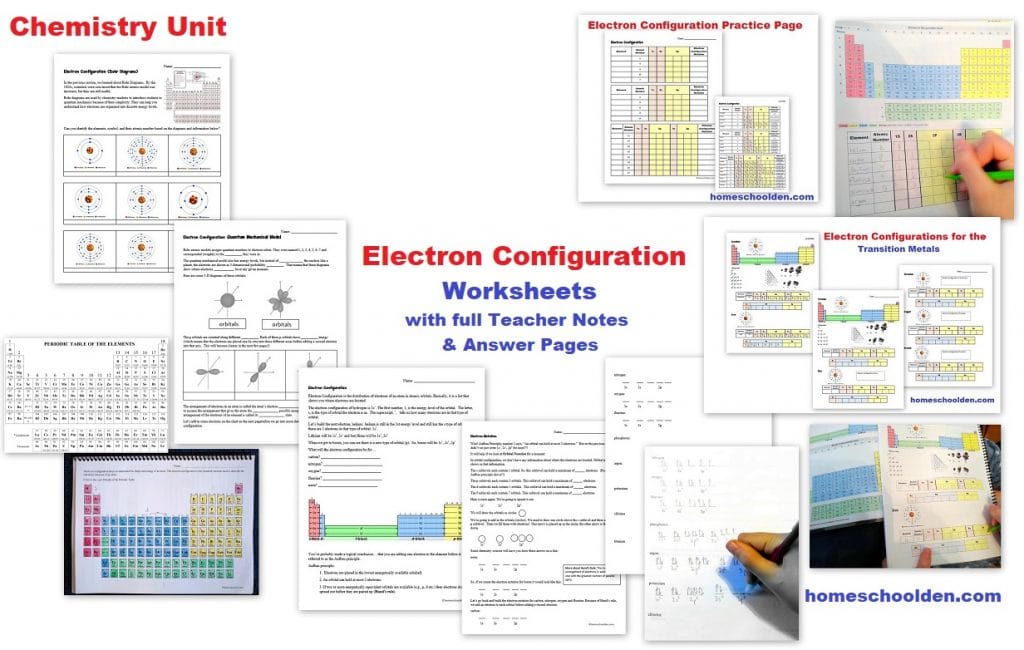
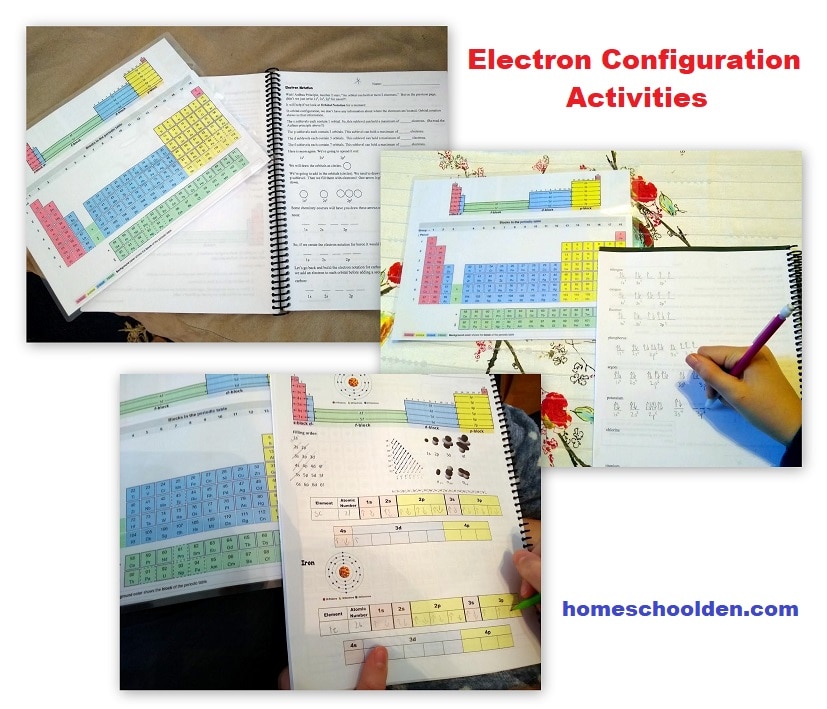
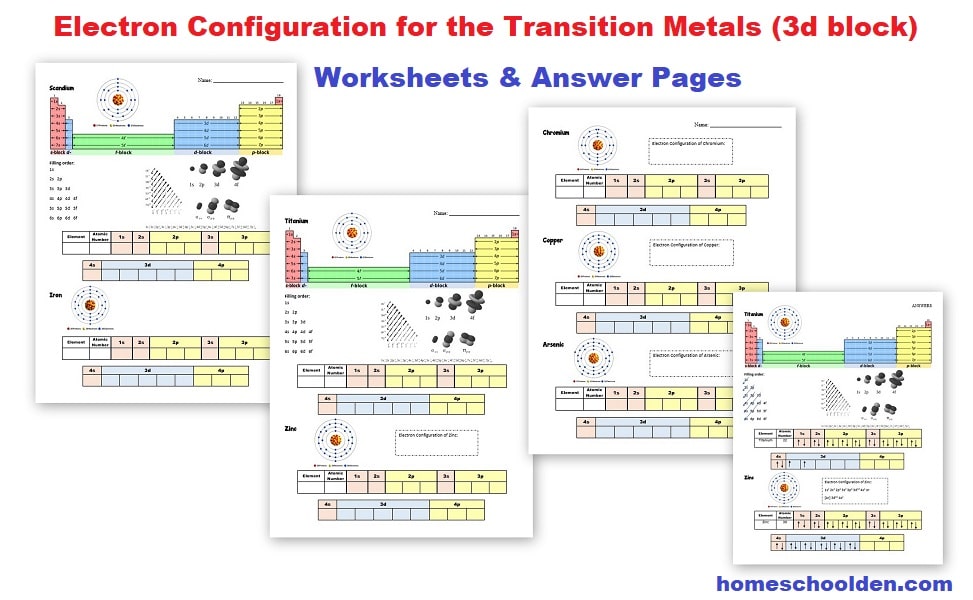 Some of the topics we explored in the Chemistry Unit include:
Some of the topics we explored in the Chemistry Unit include:
- Building the Periodic Table
- Bohr Diagrams & Understanding Valence Electrons
- Periods, Groups & Families
- hydrogen & the alkali metals, alkaline Earth metals, halogens, noble gases
- Atomic Number, Atomic Mass & Chemical Symbols
- Lewis Diagrams
- Metals, Metalloids and Nonmetals
- Unusual Element Symbols
- Trends of the Periodic Table
- Electron Configuration
Pathogens – Viruses, Bacteria and More!
The Pathogens Packet is not included in the Chemistry Bundle (it is included in the Biology Bundle), but would go well with the Introduction to Chemistry – Size of Atoms mini-unit.
![]() $8.99 Pathogens Packet (100 pages) – This unit covers the six major living and nonliving pathogens: bacteria, protozoa, fungi and parasites/worms as well as viruses and prions. The large majority of this packet goes into detail about bacteria and viruses. See more information about the Pathogens Unit here.
$8.99 Pathogens Packet (100 pages) – This unit covers the six major living and nonliving pathogens: bacteria, protozoa, fungi and parasites/worms as well as viruses and prions. The large majority of this packet goes into detail about bacteria and viruses. See more information about the Pathogens Unit here.
Don’t forget to check your PayPal email address for the download link. Feel free to email me if you need help! ~Liesl
See you again soon here or over at our Homeschool Den Facebook Page! Don’t forget to Subscribe to our Homeschool Den Newsletter. You might also want to check out some of our resources pages above (such as our Science, Language Arts, or History Units Resource Pages) which have links to dozens of posts. You might want to join our free Homeschool Den Chat Facebook group. Don’t forget to check out Our Store as well. ![]()
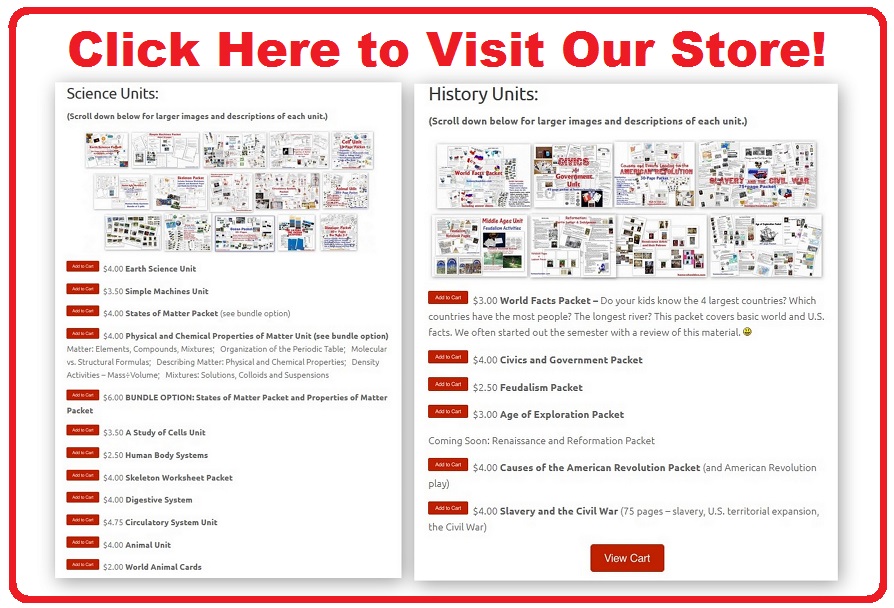 Again, if you are interested in joining our Homeschool Den Newsletter, feel free to subscribe here.
Again, if you are interested in joining our Homeschool Den Newsletter, feel free to subscribe here.
The Welcome Series includes 5 packed emails… with tips on homeschooling, keeping motivated, finding various resources and freebies tucked away on the blog and more!
Plus, you’ll be the first to hear about new packets (generally offered at a discount when they are first released), seasonal resources and more!
Disclosure: Please note that some of the post in this blog are affiliate links, and at no additional cost to you, I will earn a commission if you decide to make a purchase.
The post Intro to Chemistry – Size of Atoms Activities appeared first on Homeschool Den.


